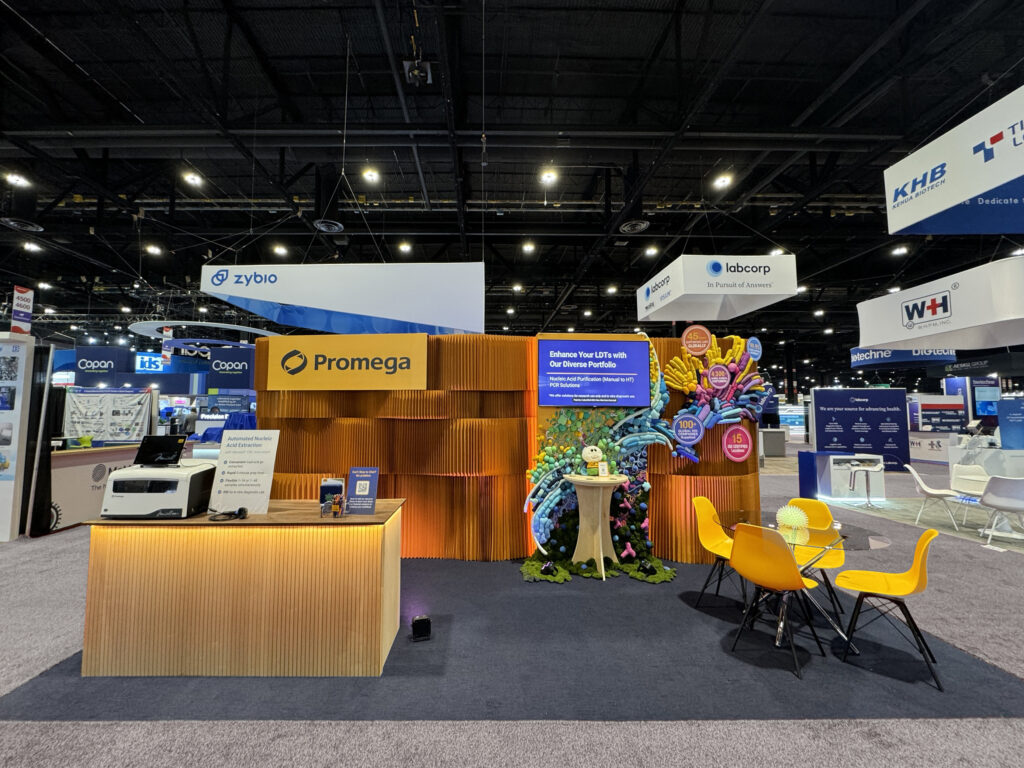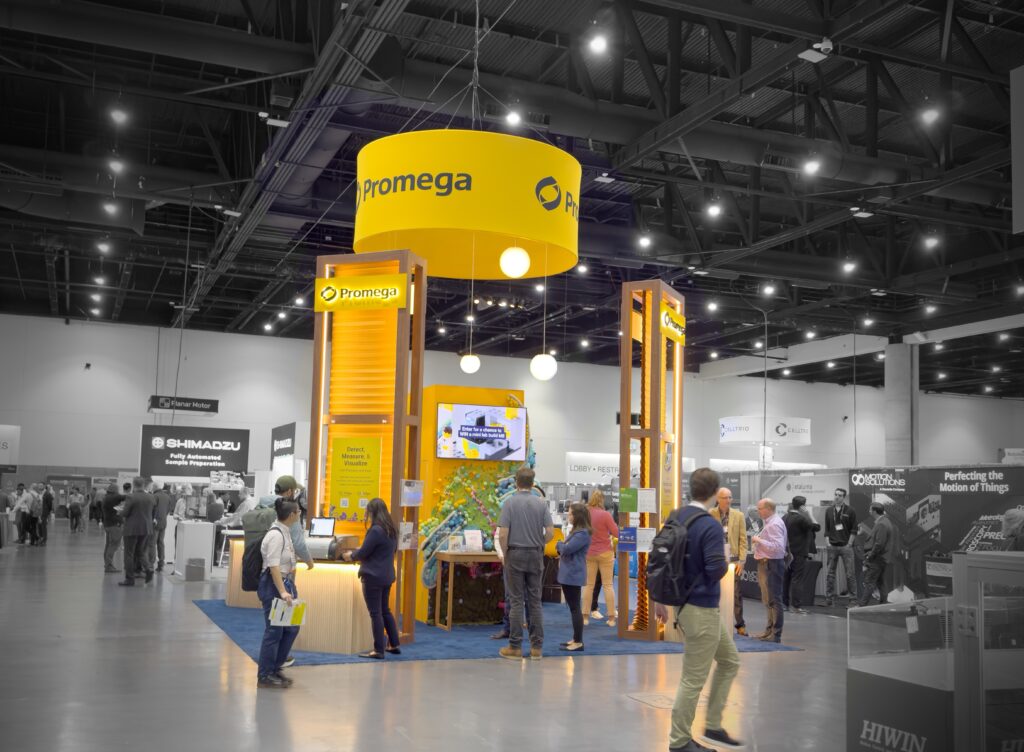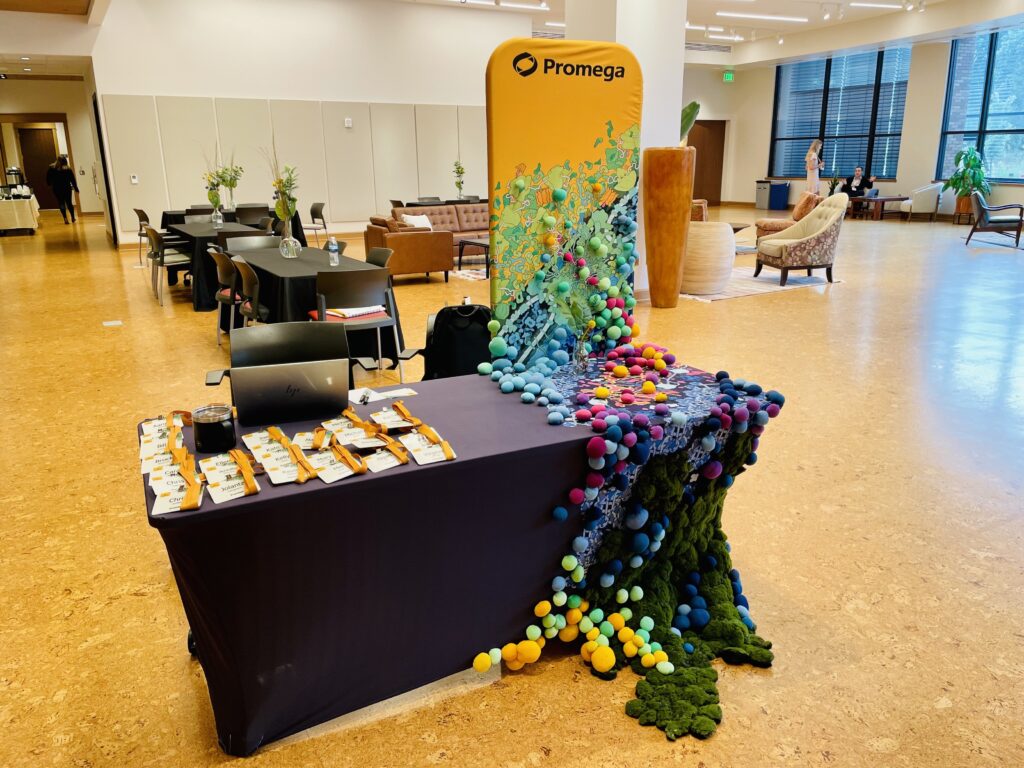Step inside a Promega booth and leave the ordinary behind. Here, science sparks creativity, sustainability is woven into every detail, and discovery isn’t just something you see—it’s something you feel.
Continue reading “Bringing Science to Life: How Art and Sustainability Shape Our New Trade Show Booth Design”Corporate Responsibility and Sustainability
How Promega Supports Sustainable Science
What is ACT and why does it matter?
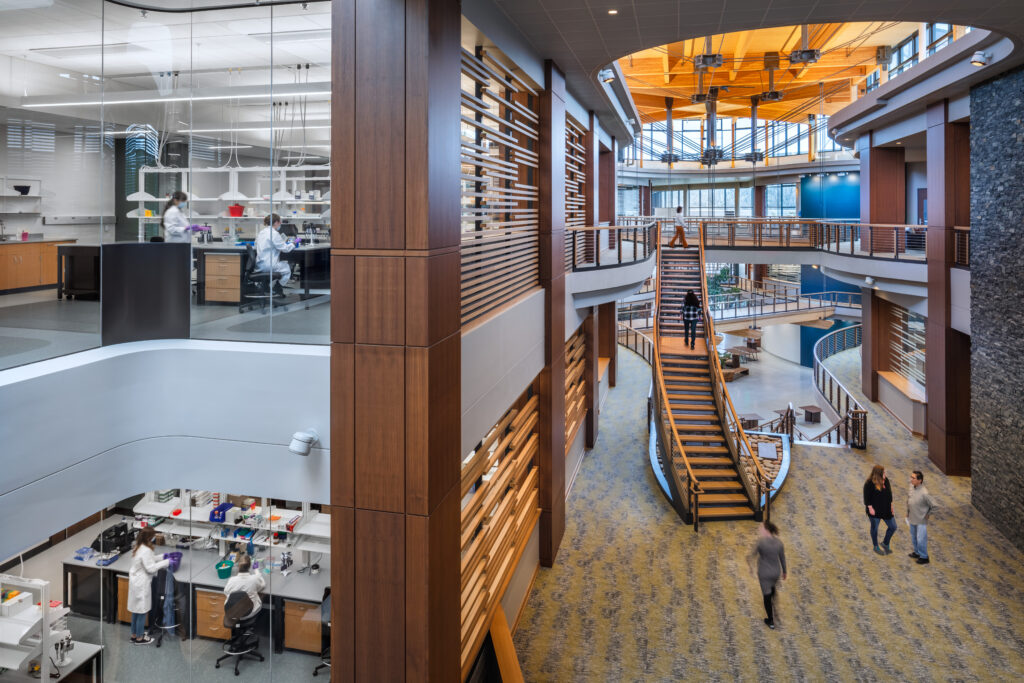
The ACT label stands for Accountability, Consistency and Transparency. The ACT label provides information on the environmental impact of life science products to help researchers make informed choices about the products they use in their labs. ACT was developed by the non-profit organization My Green Lab, in collaboration with the International Institute for Sustainable Laboratories (I2SL).
The ACT label is one of the most comprehensive product labels for the life sciences. It measures the environmental impact of a product across four categories: manufacturing, user impact, end of life, and innovation. The criterion was developed with input from industry leaders, scientists, manufacturers, and sustainability directors. Most categories are scored on a scale from 1 to 10; 10 being the highest score. Other values are assigned a yes/no value or in some instances, a specific value per day (ex. kWh/day). The Environmental Impact Factor (EIF) is the summation of these categories. The varying energy usage and distinct reports across global markets has resulted in separate awards for different world regions. By choosing products with the ACT label, researchers can align their purchasing behaviors with any goals of reducing their environmental footprint and support sustainable practices in the life science industry.
Continue reading “How Promega Supports Sustainable Science”Embracing Spring at Promega: A Commitment to Environmental Stewardship and Sustainable Growth
This blog is guest-written by Jason Hankes, Manager, Land & Natural Resources, Promega Corporation
At Promega, the arrival of spring is not merely a celebration of nature’s rejuvenation, but also a reflection of our steadfast commitment to environmental stewardship. This vibrant season allows us to spotlight a crucial ecological initiative: the controlled prairie burn. Conducted every three to five years across over 25 acres of native prairie restorations, these burns are essential for habitat health. They not only reduce the risk of wildfires but also curb invasive weeds and stimulate new growth. Undertaking these burns exemplifies how Promega reinforces its commitment to environmental stewardship – a foundational principle that guides our operations and influences our architectural designs.
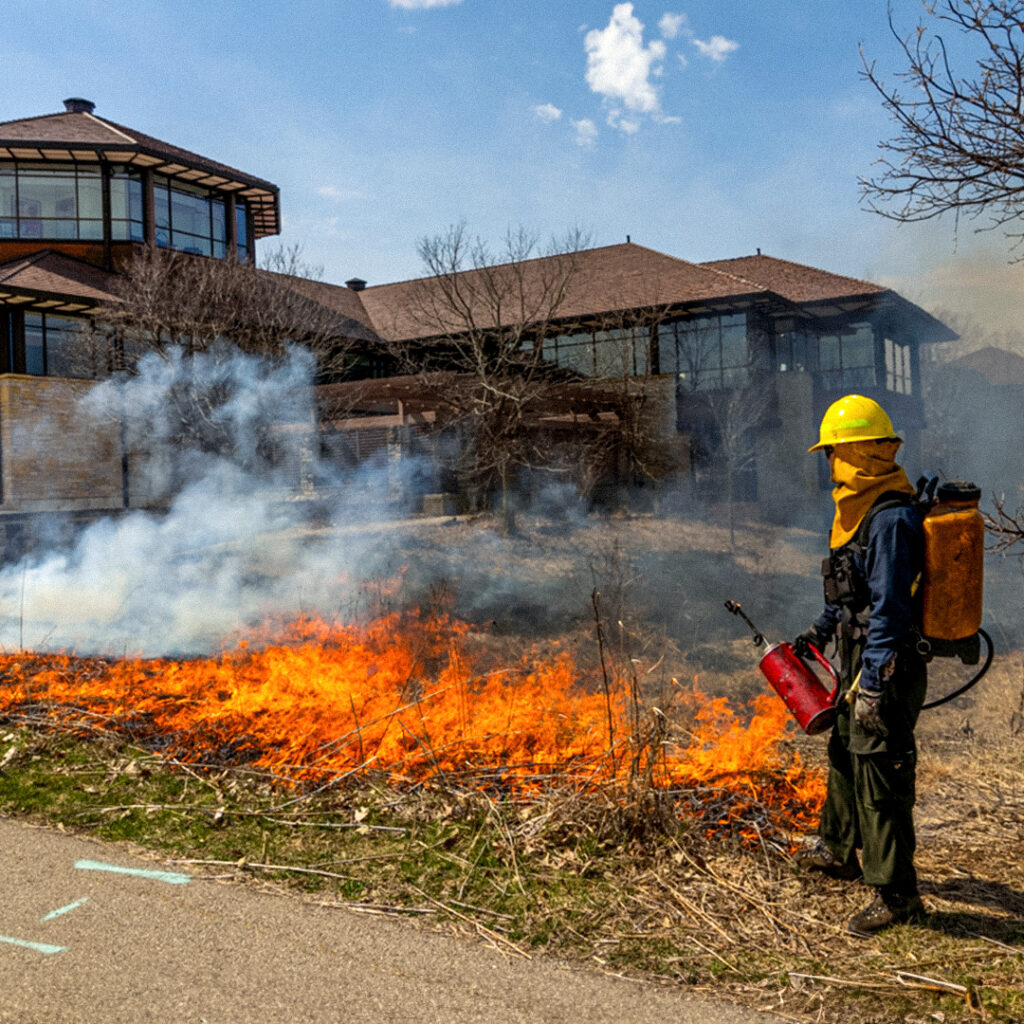
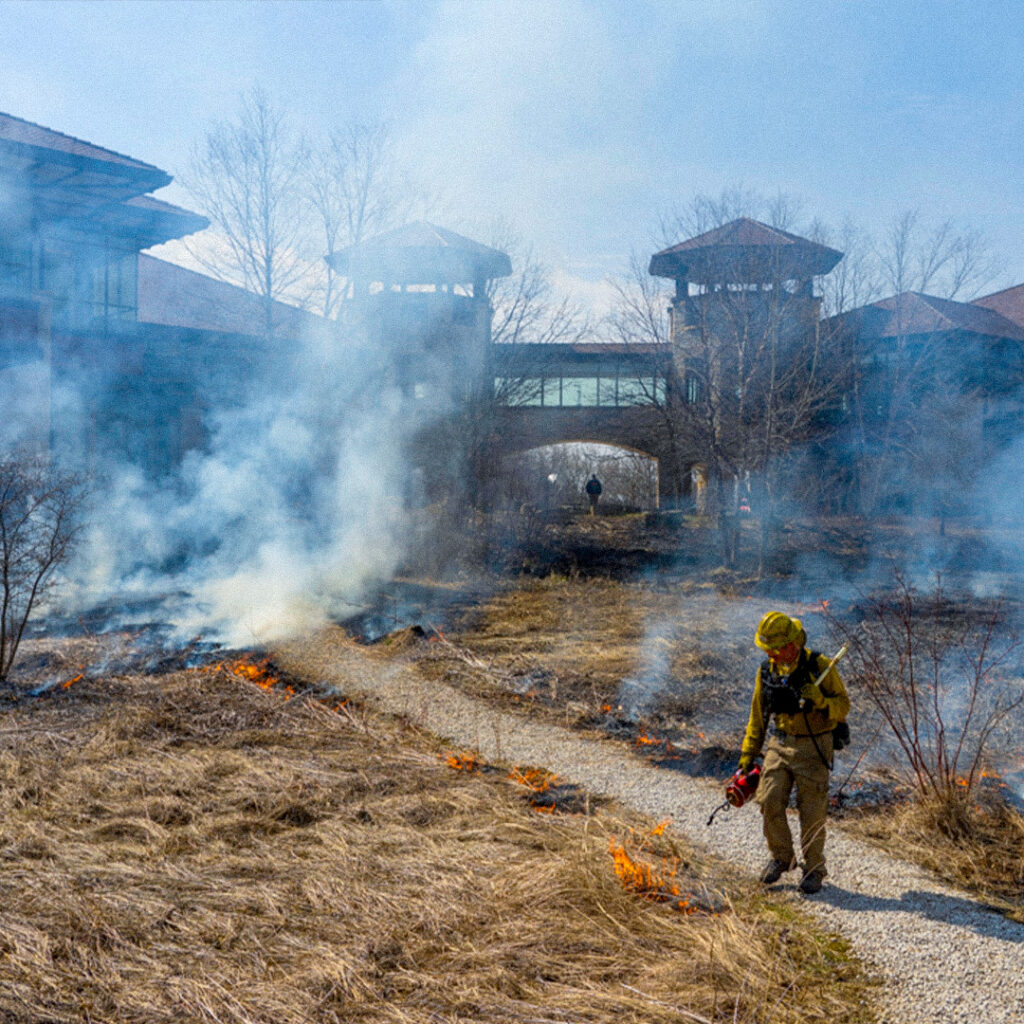
Beyond April: Sustaining Momentum in Sexual Assault Awareness and Action
This guest blog post is written by Tara Luther, Sr. Marketing Specialist, Genetic Identity at Promega.
April 2024 marked the 23rd anniversary of Sexual Assault Awareness Month (SAAM) in the United States. While we have crossed into May, the importance of what SAAM stands for does not diminish with the changing of the calendar. The National Sexual Violence Resource Center (NSVRC) emphasizes that SAAM is a time to not only draw attention to the prevalence of sexual assault, but to also educate individuals and communities about how to prevent sexual violence.
Continue reading “Beyond April: Sustaining Momentum in Sexual Assault Awareness and Action “Blending Art and Science in a Costa Rica Physics Lab
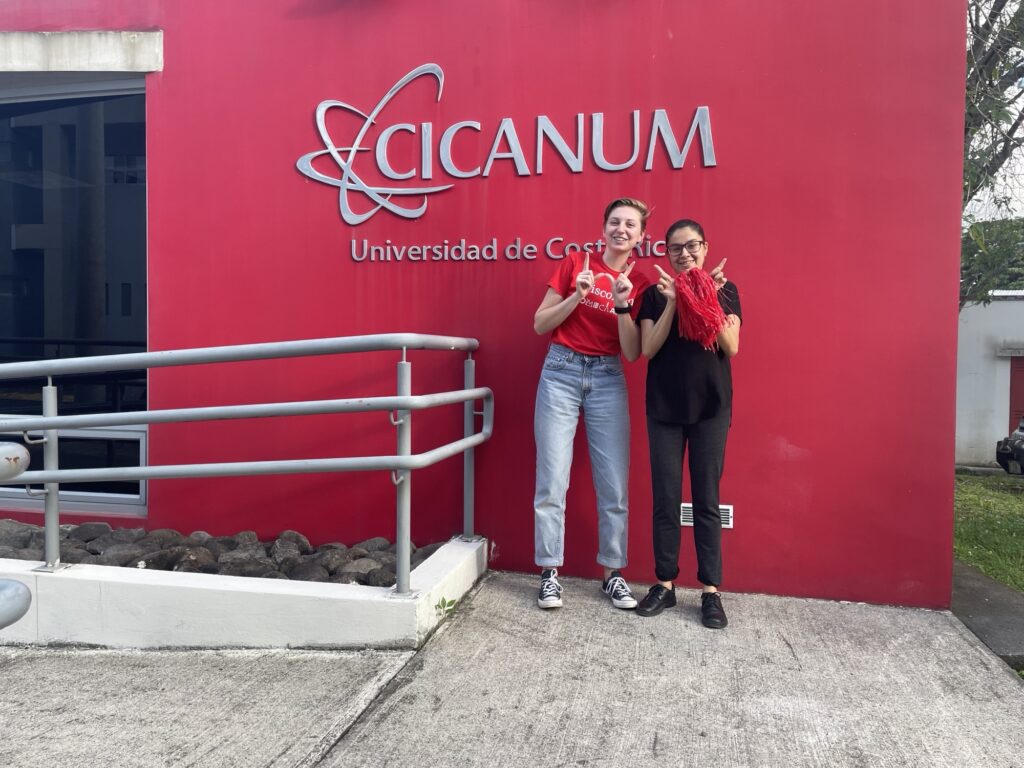
My name is Sophia Speece. I am a junior at the University of Wisconsin-Madison studying Biomedical Engineering and Music Performance. As you can imagine, there is not a lot of overlap between these two passions of mine.
This past summer I was given the unique opportunity to combine these two areas. I applied and was accepted for the “Artist in the Science Lab” internship abroad in Costa Rica!
Continue reading “Blending Art and Science in a Costa Rica Physics Lab”We’re Committing to 100% Renewable Electricity by 2025
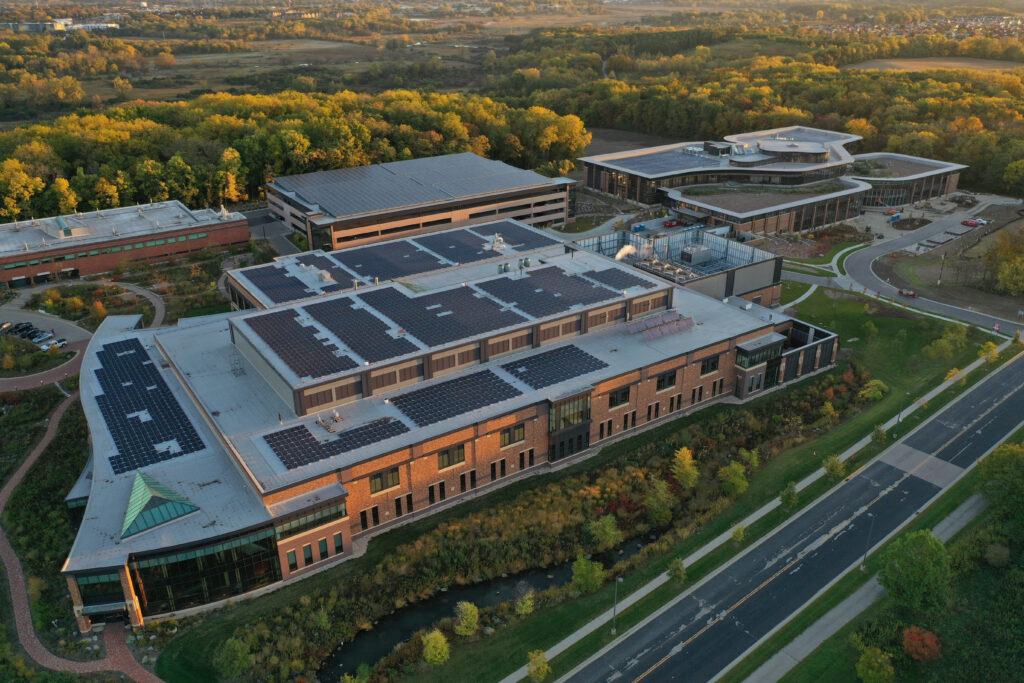
In 2021, we unveiled our most ambitious sustainability goals ever. These goals include a 50% reduction in carbon emissions by 2030, as indexed to revenue over a 2019 baseline.
In 2022, we announced that renewable sources provided over 20% of our global electricity usage.
This year, Promega is excited to announce that we’re committing to 100% renewable electricity by 2025.
Continue reading “We’re Committing to 100% Renewable Electricity by 2025”Earth Month Events Highlight Recycling, Lawn Care and More!
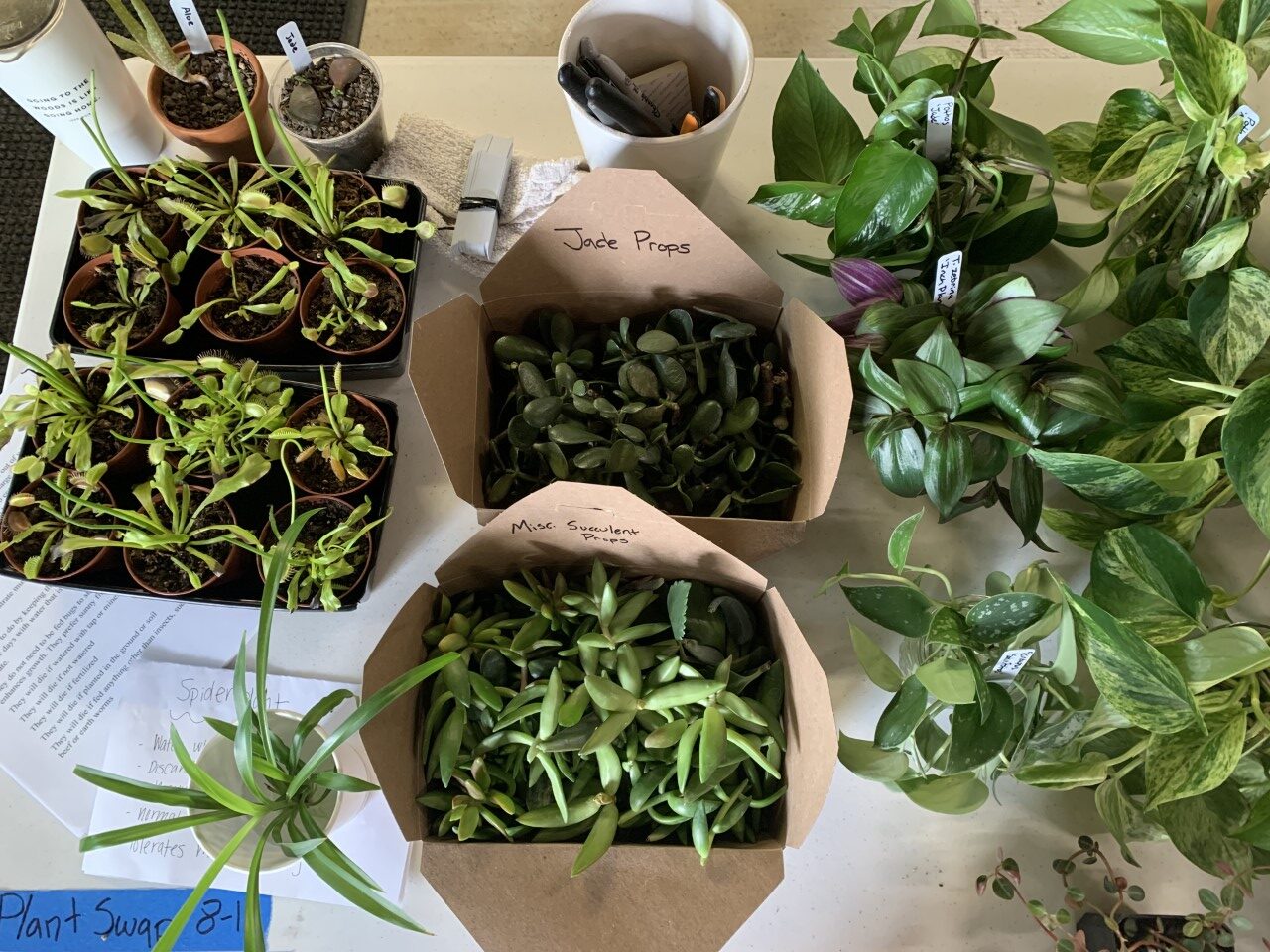
Earth Day 2023 is past, but protecting our environment and natural resources is important every day of the year.
As a company, Promega has set ambitious goals for reducing our carbon emissions, plastic waste and water usage by 2030. We design each new building to surpass the sustainability features of all previous facilities. Our culinary garden employs techniques that are beneficial to the ecosystem, from enriching the soil to supporting local wildlife. In fact, over 225 acres of our 400-acre Madison campus is dedicated to preserved prairie, wetlands and woodlands.
Promega employees are also dedicated to reducing their impact on the natural world. This month, a series of employee-hosted Earth Month events gave Madison-based Promega employees the opportunity to test-drive electric cars, trade plants and learn about sustainable lawncare. Here are a few highlights from Earth Month 2023 at Promega.
Continue reading “Earth Month Events Highlight Recycling, Lawn Care and More!”From Student Debt Assistance to Family-Forming Support: Benefits and Well-Being Go Hand in Hand
You know this, but it bears repeating. Prioritizing physical, psychological, emotional and financial wellness is key to supporting our overall well-being. This holds true during the busy holiday season and throughout the entire year.

It can also be easier said than done, so we need as much support as possible in this vital endeavor. An in-depth framework recently published by the US Surgeon General outlines a vision of the workplace as an engine of well-being. The report states, “Our workplaces play a significant role in our lives. Work affects both our physical and mental well-being – in good ways and bad. The COVID-19 pandemic brought the relationship between work and well-being into clearer focus.”
Continue reading “From Student Debt Assistance to Family-Forming Support: Benefits and Well-Being Go Hand in Hand ““Forever” Chemicals: Forever No More
If you were tasked with destroying something called “forever chemicals”, chances are you’d be leaning towards rather harsh methods. Incineration would probably be on the table.
These so-called “forever chemicals”, or per- and polyfluoroalkyl substances (PFAS), are a family of organic compounds where fluoride replaces hydrogens atoms on carbon chains. They are very water and oil repellent, which makes them ideal for use in non-stick cookware, stain-proof fabrics and fire-suppressing foams. Recent studies, however, show that exposure to PFAS is linked to a range of health issues—from increased cholesterol levels to some cancers. Even levels of PFAS present in drinking water in as low as parts per billion levels can pose risks to human health. These risks are exacerbated by the tendency for PFAS to bioaccumulate, or become concentrated in the tissues of humans and animals.
Methods do exist to filter out PFAS from water. But what do you do when it’s time to replace those filters? Simply throwing out PFAS-contaminated equipment just moves the problem to a landfill.

Instead, these “forever chemicals” need to be destroyed. Most existing strategies for breaking down PFAS use harsh conditions, such as incinerating PFAS residues in furnaces or oxidizing them in supercritical water—water that is at more than 37°C and 200atm of pressure. Now, scientists reporting in Science have discovered that such extreme methods may not be needed to destroy “forever chemicals” (1).
Continue reading ““Forever” Chemicals: Forever No More”A Different Kind of Sustainable Growth: What’s Happening in the Promega Garden
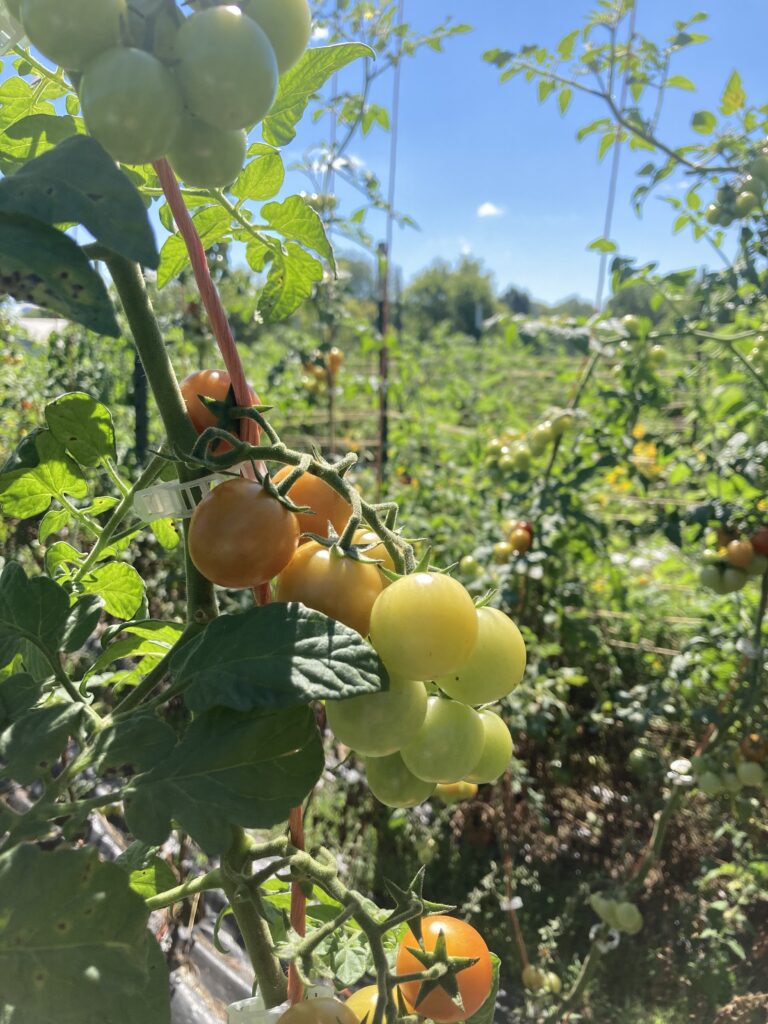
Summer is winding down at Promega Madison. Kids are heading back to school, sunset is creeping earlier, and a new cycle of academic research projects are ramping up. However, in the Promega garden, Master Gardener Mike Daugherty is still hard at work harvesting fresh produce that will soon become delicious meals in our cafeterias. As the seasons begin to change, I stopped by to learn what’s happening on the farm. Here are a few highlights that Mike shared.
Continue reading “A Different Kind of Sustainable Growth: What’s Happening in the Promega Garden”